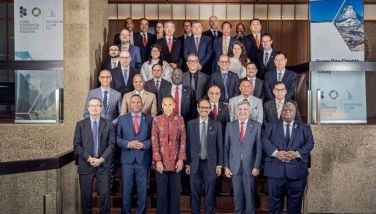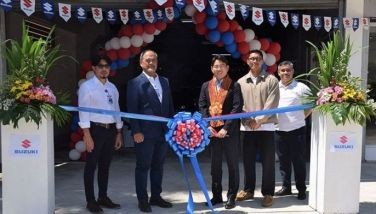It's NOT the End of the Road
MANILA, Philippines - Peter Fleet, Ford ASEAN President and Neil McCarthy, Corporate Communications Director for Ford APA were on hand last week to reveal the sudden news: Ford is putting a stop to its manufacturing efforts in the Philippines. Although the move is not expected to be completed until December 2012—when the last Escape rolls off the assembly line—it’s certainly a black eye to the government who’s been pushing for the Philippines to become a regional automotive manufacturing hub that rivals Thailand. But more importantly, this raises some questions about Ford’s Philippine operations. This primer hopes to answer some frequently asked questions about Ford’s move.
Q: What do you mean by halting Philippine manufacturing?
A: In case you’ve been living under a rock these past few years, Ford is part of a small group of local car makers that have been assembling cars for both local consumption as well as export. Vehicles such as the Ford Lynx, Ranger, and Focus as well as Mazda3 and Tribute were all assembled at Ford’s Sta. Rosa, Laguna plant since 1999. Currently, the Escape is still being made there. But by the end of the year, Ford will be stopping production locally when the last Escape rolls off the assembly line.
Q: So you mean we won’t see Ford by 2013 anymore?
A: Unless the Mayan calendar is to be believed, the world will not end, especially for fans and owners of the Blue Oval. Ford Motor Company Philippines (FMCP), the local manufacturing subsidiary of Ford Motor Company will indeed close. However, Ford Group Philippines, the national sales company, will continue on with business as usual. In fact, Ford sees big growth in the Philippines and will introduce eight all-new One Ford vehicles by 2015 including the Ranger and Focus. And of course, there’s the Mustang as well. In terms of dealers, Ford is expanding its network by doubling the number by 2015. This year alone, Ford will open 12 dealerships in key locations around the country.
Q: What brought about the move to close the plant?
A: Ford’s move to end Philippine manufacturing is first and foremost a business decision. With Ford’s move towards globalizing their products under the One Ford initiative, there must be economies of scale with regards to rationalizing production. Unfortunately, the Sta. Rosa plant’s annual output of 36,000 units simply pales in comparison to the new, state-of-the-art Ford Thailand Manufacturing (FTM) output of 300,000 vehicles. In addition, there’s a lack of capable local suppliers in the country. Though the country does have a handful of great suppliers, they’re not enough to sustain Ford’s mammoth manufacturing requirements.
Q: Why is Ford abandoning what they’ve pioneered: the export of fully assembled vehicles?
A: The world now is different from the way the world was in 1998. Before, the philosophy of Ford, like other manufacturers, was to create vehicles tailor-made to each specific market. For instance, the Escape here is very different to the way the Escape is in the North American market. But because of the One Ford strategy, Ford is now developing global vehicles which can be marketed and sold across the world. Now that Ford can consolidate its manufacturing, it can improve the quality of its vehicles as well as offer better equipment levels for the same price. Ford has thought long and hard to keep its Philippine manufacturing operations alive. Unfortunately, no product (current or in the future) fits the specific capabilities and scale of the Philippine plant.
Q: So what’s going to happen to all the employees and the plant itself?
A: Ford has already informed all the employees in its Sta. Rosa, Laguna plant as well as the government and dealers, and moves are in place to reduce the potential layoff of 250+ people. Aside from offering separation pay, a comprehensive support program is in place to help all concerned. Exit interviews are being made on a one-on-one basis to move employees with good skill and potential to other parts of Ford operations from dealerships to assembly plants overseas. As for the plant itself, things are now winding down. All machineries and equipment will be removed, and eventually, it will be mothballed. Meanwhile, no decision about the national sales company has been made yet. However, everything points towards moving Ford Group Philippines to a more central location, perhaps somewhere in Metro Manila.
Q: What about the supply of parts or even new cars?
A: As it stands, only the Ford Escape is being assembled in the Sta. Rosa plant. By itself, it only contributes to 10 percent of Ford’s local sales. Therefore, the closure of Philippine manufacturing will have no effect on the availability of new cars, parts, accessories and what have you. There will be no effect on pricing either. So, rest easy—programs such as the 24-Hour Parts Guarantee will continue well into 2013 and beyond.
Q: Will the closure of Philippine manufacturing affect Ford’s local plans?
A: The closure will not affect Ford’s presence in the Philippine market. All plans, both present and future, will go on. As mentioned, Ford is expanding its dealer network and will launch the all-new Focus next month. Meanwhile, deliveries of the much-awaited Ranger and Explorer EcoBoost start in July while the Mustang will hit the roads by year’s end.
Q: Is there anything the Philippine government can do to keep Ford’s manufacturing alive? What about the so-called auto industry road map?
A: If ever there’s anything the Philippine government could have done, they should have done it before. As it stands though, there’s no backing out for Ford. They’ve notified all the agencies concerned including Malacañang about their decision. No amount of legislation will stop Ford now. As mentioned, they’ve thought long and hard before deciding to stop Philippine operations, and they’ve taken all factors into consideration including the so-called auto industry development road map. Ford doesn’t find it viable to continue manufacturing in the country.
As Ford Motor Company Philippines and the Sta. Rosa, Laguna plant shuts down; they can look back and remain proud of being the first and only volume exporter of vehicles in the Philippines. Since 2002, the company has exported more than 80,000 vehicles with an export value of more than US$1 billion to ASEAN markets including Thailand, Indonesia, and Malaysia. Ford’s decision to stop manufacturing operations in the Philippines closes an important chapter in its operations. However, with Ford Group Philippines, the national sales company, they remain committed to the country and the future. And this definitely opens a new chapter for the Blue Oval.
- Latest


























